Galleries
At Galerie Gmurzynska, A Double Homage to Kurt Schwitters and Zaha Hadid
It's the last project designed by Hadid.

It's the last project designed by Hadid.

Hili Perlson

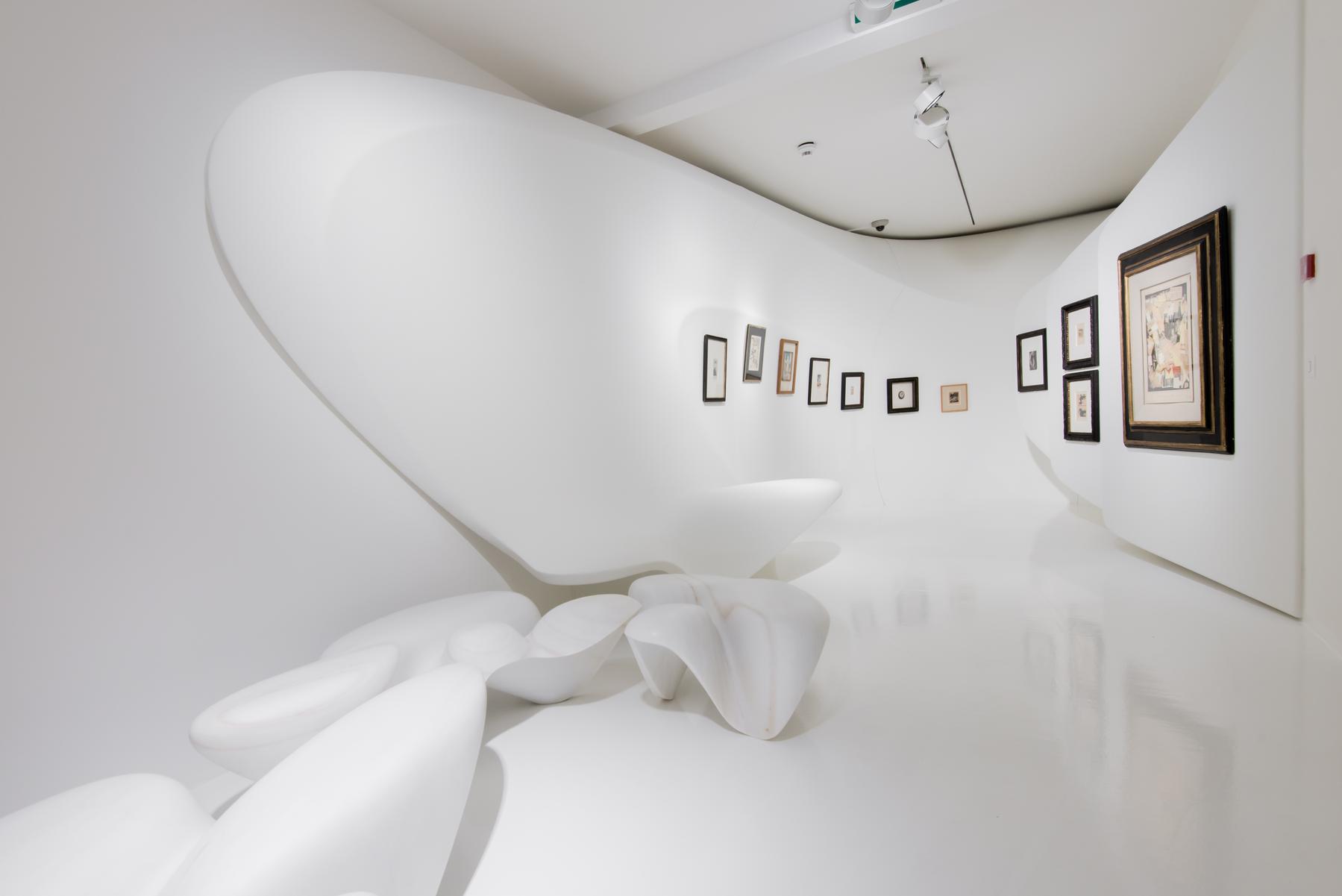
Installation view of “Kurt Schwitters: Merz” designed by Zaha Hadid. Courtesy of Galerie Gmurzynska.
It was meant to be a homage to influential Dadaist Kurt Schwitters, but Zaha Hadid’s last project at Galerie Gmurzynska, conceived by the architect before her untimely death, became a double tribute honouring the maverick architect as well.
An immersive installation of works from the archives of Zaha Hadid Architects reconfigures the gallery’s entire ground floor space into a sleek, futuristic grotto in black and white. The installation takes its cue from Schwitters’s Merzbau, an endlessly evolving collaged sculpture made of scraps that the artist constructed in his Hannover apartment between the World Wars.
The original Merzbau was destroyed by bombing in 1937, but Schwitters built several other Merzbauten after the war. (The last standing one, a Merz Barn in England, was recently saved on the behest of Hadid together with the gallery).
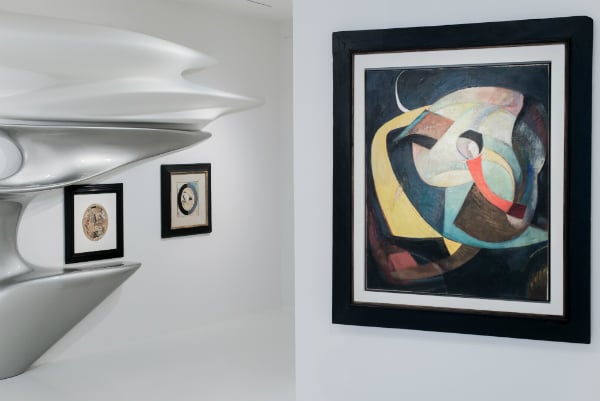
Installation view of “Kurt Schwitters: Merz” designed by Zaha Hadid. Courtesy of Galerie Gmurzynska.
The show’s timing and location are highly symbolic: the Zurich space of the gallery is located in the same building where, 100 years ago, the very first Dada exhibition took place. A stone’s throw away, the Cabaret Voltaire—birthplace of Dada—is still in full swing, thanks in no small part to its dedicated director Adrian Notz, who also curated the art works in this show.
“It’s also symbolic for the future of Zaha Hadid Architects,” said gallery director Mathias Rastorfer, who together with Patrik Schumacher, senior designer and director of Zaha Hadid Architects, made the emotional decision at Hadid’s funeral to bring the project to completion.
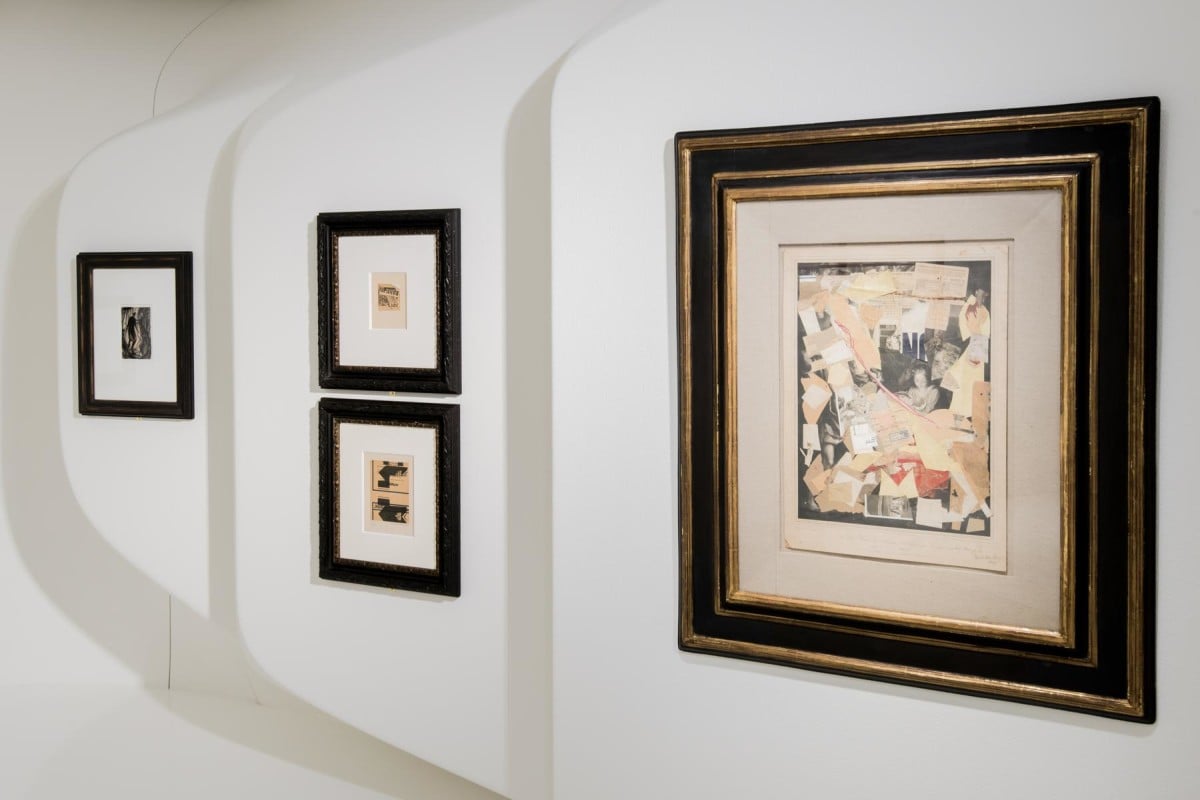
Installation view of “Kurt Schwitters: Merz” designed by Zaha Hadid. Courtesy of Galerie Gmurzynska.
The undulating architectural structure brings together curved objects, modular furniture, and organic design features from Hadid’s repertoire, that create niches, shelves, and surfaces upon which artworks by Schwitters are presented.
“It’s a system that represents the Merzbau, but which can also receive Schwitters’ works” said Schumacher. “It gains an articulated order without losing its essence,” he added. “These odd geometries can fit into any pre-existing, weirdly shaped space. In a patchwork of pragmatic requirements, it’s about making complexity manageable and legible.”
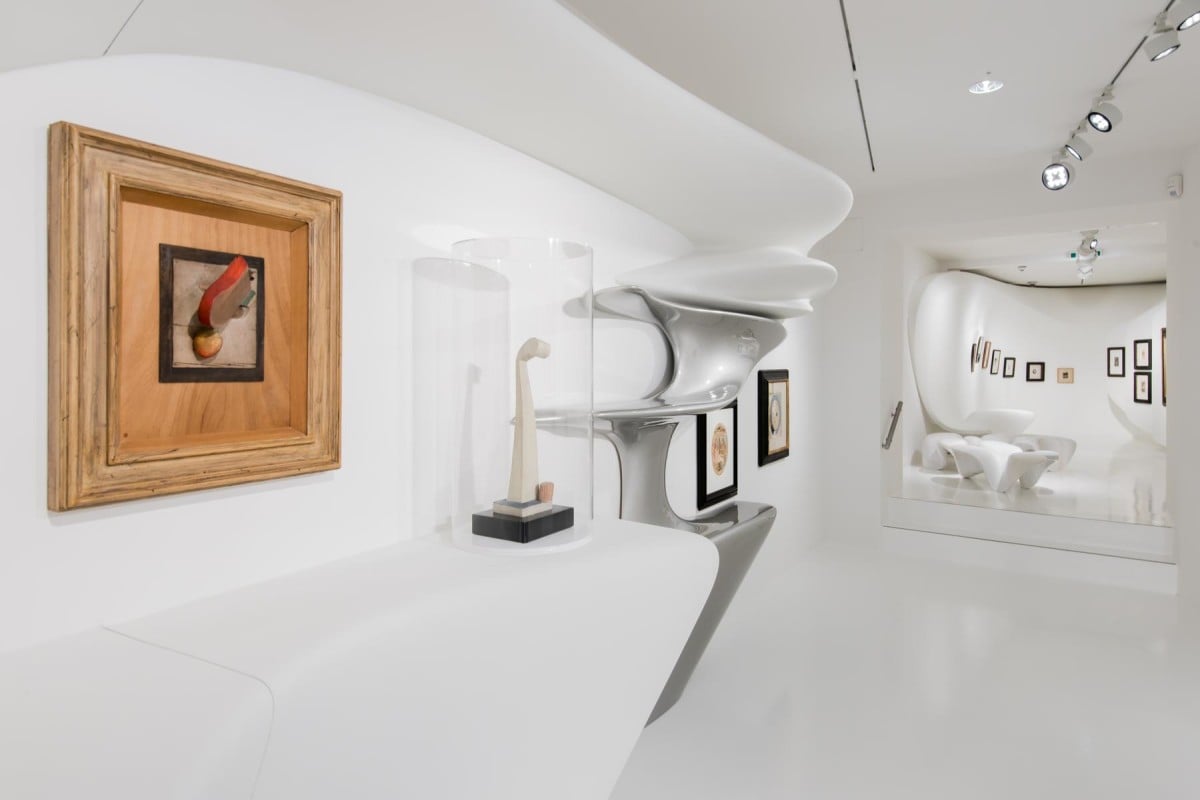
Installation view of “Kurt Schwitters: Merz” designed by Zaha Hadid. Courtesy of Galerie Gmurzynska.
For Schumacher, the vitality of urban spaces and Hadid’s approach to architecture that takes this dynamism into account are closely linked to the idea of the Merzbau, where elements are added onto a constantly morphing structure, existing in an evolving environment.
Notz, who curated the show, agrees with Schumacher’s interpretation. “He is describing exactly what Schwitters was also aiming at. The chaos of the space in this gallery, dictated by pragmatic solutions like air conditioning, electricity outlets, etc—that would be Dada! And then Hadid’s architectural elements bring it all together, which recalls what Schwitters said about Merz; it’s about bringing things in order, which he called the Merz Gesamtkunstwerk (total artwork).”

Installation view of “Kurt Schwitters: Merz” designed by Zaha Hadid. Courtesy of Galerie Gmurzynska.
Notz describes curating this major retrospective as “magic.” Thanks to the gallery’s five-decade long archiving and exhibition history with the artist, the show includes a number of never before seen works, correspondences that are collages in themselves, as well as rare first-edition magazines by Schwitters. Also included on the gallery’s second level is a selection of works by artists affiliated with Schwitters such as Arp and Malevich.
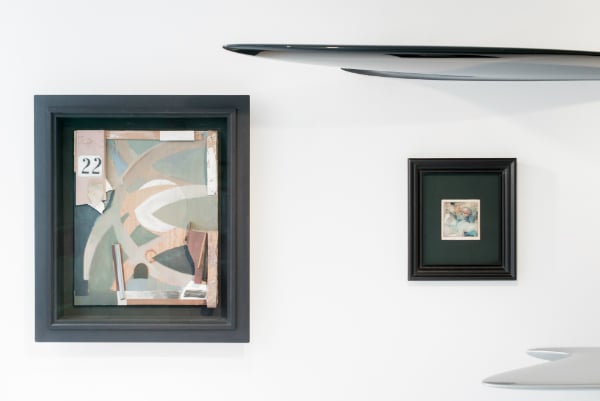
Installation view of “Kurt Schwitters: Merz” designed by Zaha Hadid. Courtesy of Galerie Gmurzynska.
“It’s a beautiful dialogue, and showing the two together helps to understand both approaches,” Notz added.
“Kurt Schwitters: Merz” is on view at at Galerie Gmursynska from June 12 – September 30, 2016.